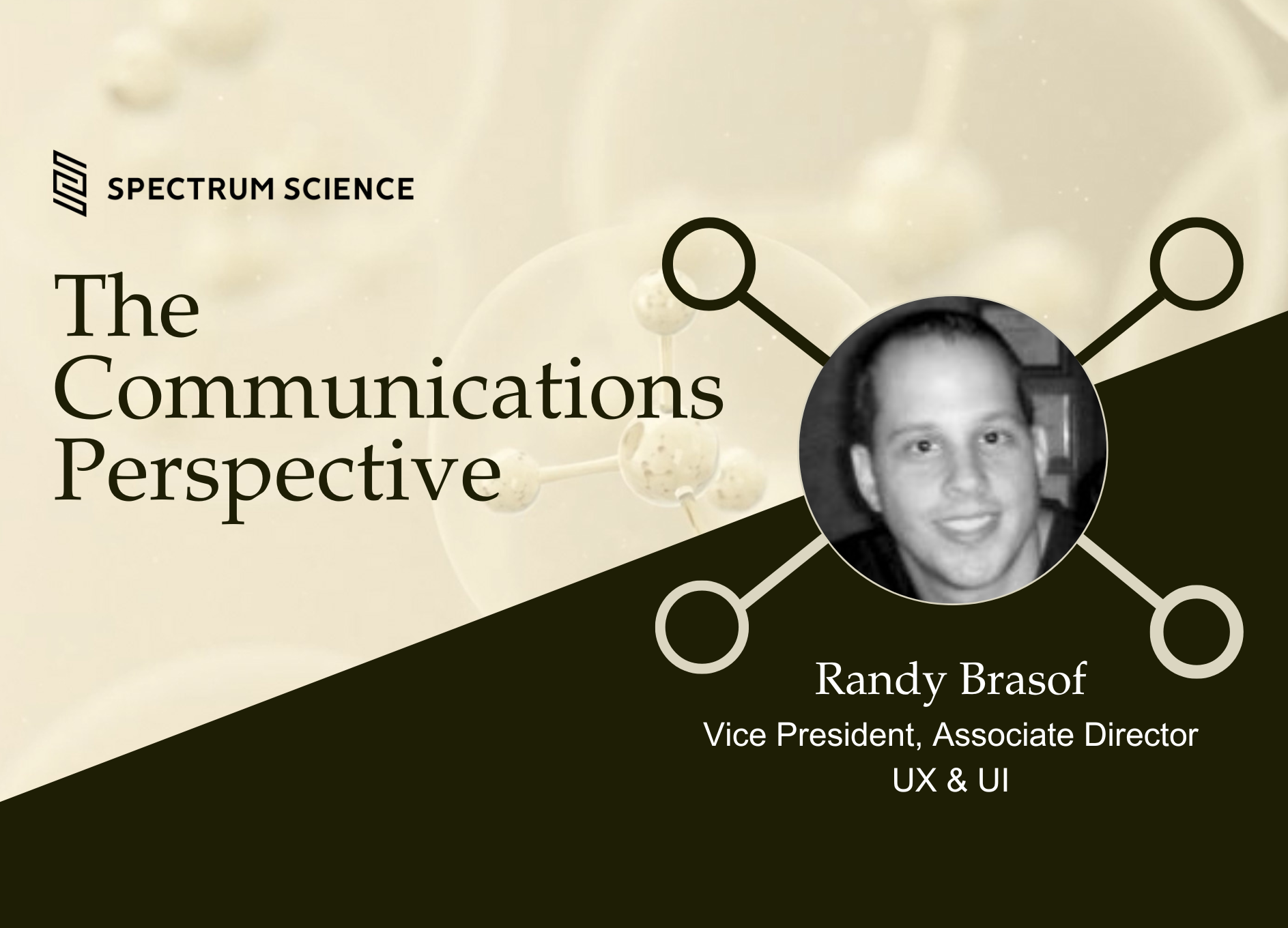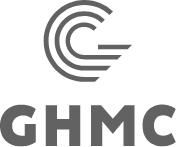
Design thinking offers a powerful framework for solving one of the biggest challenges in pharma communications: integrating science, strategy and storytelling in a way that resonates with diverse audiences. Whether you’re working with patients, healthcare providers or other stakeholders, this human-centered approach can help uncover insights, create empathy-driven content and deliver solutions that are not only effective, but meaningful.
We sat down with Randy Brasof, Vice President, Associate Creative Director of UX and UI, to discuss his role at Spectrum Science and explore the challenges of applying design thinking in healthcare and strategies to overcome them.
- Tell us about your role and share how design thinking helps inform your work and Spectrum’s commitment to integrating science, strategy and storytelling.
As Vice President, Associate Creative Director of UX and UI at Spectrum Science, my role is to translate complex scientific concepts into compelling visual narratives that resonate with diverse audiences. By blending creative vision with strategic insight, I ensure that scientific advancements are not only understood but also emotionally impactful and actionable. It’s a creative process grounded in empathy—which is also the foundation of design thinking.
2. How would you explain design thinking’s impact on pharma communications?
In pharma communications, design thinking helps ensure that messaging resonates with a diverse audience by keeping their needs at the center of the process. It encourages us to challenge assumptions, test ideas early and gather real-world feedback, so the solutions we create are not only innovative and engaging, but also relevant and effective for the specific patient, HCP or stakeholder we’re trying to reach.
3. Can you share an example of a project where design thinking helped create a more patient-centric solution?
Teens and young adults with psoriasis can face a long and difficult journey if they don’t receive the right medical care. Without proper treatment, their condition may worsen, leading to prolonged symptoms and increased psychological distress.
To highlight the importance of choosing the right specialist, Spectrum created A Tale of Two Patients, an interactive website that follows the journeys of two individuals diagnosed with psoriasis at the same time. Their paths diverge—one continues seeing a general doctor, while the other visits a dermatologist.
At key moments in the story, users can see how each patient is feeling and whether their condition has improved. Understanding that our audience may not read two separate narratives, we integrated a unique storytelling approach: the patients become friends and text each other updates. This way, while reading one story, users also gain insight into the other patient’s experience.
By the end of the journey, users will clearly see the benefits of choosing a dermatologist for faster recovery while experiencing minimal psychological impact. To further support informed decision-making, the site provides a doctor discussion guide to help patients ask the right questions and take control of their care.
4. What are the biggest challenges in applying design thinking to healthcare, and how do you overcome them?
One of the biggest hurdles is navigating regulatory and compliance barriers in which healthcare operates. To address this, compliance and regulatory experts should be involved early in the design process. Another major challenge is resistance to change from healthcare professionals who have deeply ingrained workflows. Many doctors, nurses and administrators may be hesitant to adopt new methodologies, fearing disruption to patient care. It is essential to engage healthcare providers as co-creators in the design process rather than treating them as end-users. Using storytelling and real-world case studies can illustrate the benefits of new designs, while starting with small, measurable improvements can help build trust and demonstrate value before scaling solutions.
5. Effective communication is about more than just delivering information, it’s about creating meaningful connections. What key lessons have you learned in doing this successfully?
Clarity and empathy are just as important as creativity when it comes to effective communication. It’s not just about making science compelling—it’s about making it relatable and actionable for the audience. Whether designing a web site or developing a multi-channel campaign, I’ve learned that understanding the audience’s mindset —an essential design thinking principle—is crucial. What motivates them? What do they need to hear? It’s not about us; it’s truly about them and meeting their needs.
6. With the increasing complexity of healthcare communications, how do you see this field adapting to meet new challenges and opportunities?
As healthcare communications continue to evolve, two key trends will shape how the field adapts. First, the growing use of data and advanced analytics will enable more personalized communication. Tailored messaging helps resonate with individual patients by addressing their unique experiences and concerns. Second, with the rise of diverse platforms, multichannel engagement is essential. Today’s audiences consume information across social media, digital tools, podcasts and traditional media, which require healthcare communicators to develop integrated strategies that deliver cohesive messages across these touchpoints.
Interested in transforming your healthcare communications with the power of design thinking? Reach out to us to discover how Spectrum Science can help you create empathy-driven, impactful solutions that resonate with your audience. Whether you’re looking to enhance patient engagement, streamline provider interactions, or innovate your communication strategies, our team is here to support you every step of the way.
Perspectives

Communications
J.P. Morgan Healthcare Conference 2024: Unity and Hope Amid Industry Challenges

Communications
Attending HLTH 2024: Where Networking, Brand Boosting and Cool Collide

Communications
A Reflection on Mentoring Future Biotech Communicators

Communications
Top 5 Ways Consumer Brands Make an Impact at Medical Meetings





